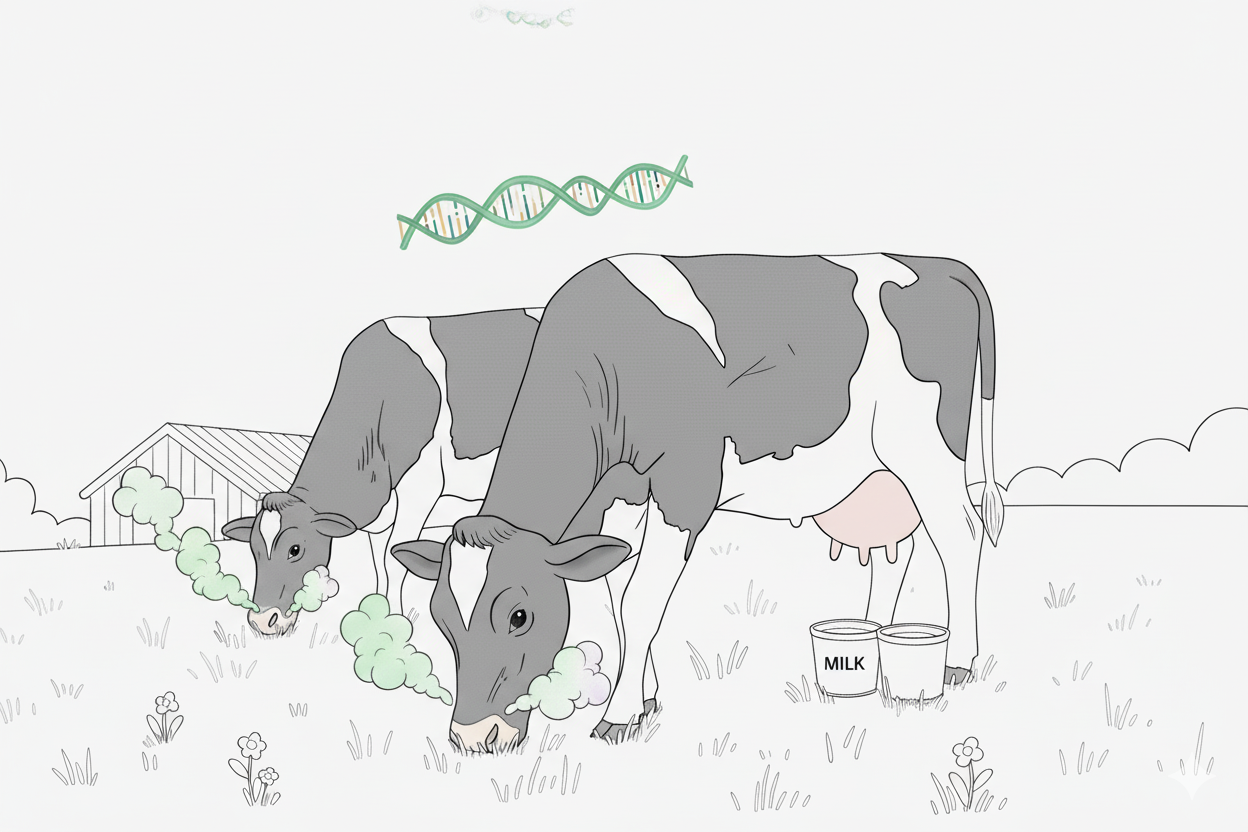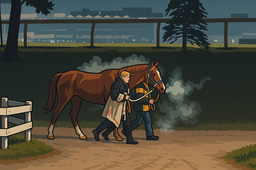Genes, Milk, and Nitrogen: Decoding How Cows Manage Waste at the Genomic Level
Published in Genetics & Genomics, Agricultural & Food Science, and Zoology & Veterinary Science

Explore the Research
 Research Communities by Springer Nature
Research Communities by Springer Nature
What do we really know about dairy and chronic diseases?
Dairy fats, inflammation and the food matrix
Published in Dairy Science and Management
October 2025
The Study at a Glance
Researchers analyzed more than 347,000 milk test-day records from 52,000 Iranian Holstein cows, using genomic data from 2,187 bulls and over 41,000 SNP markers.
By applying a single-step genome-wide association study (ssGWAS) combined with random regression models, they tracked how genetic effects on MUN changed over time across the lactation cycle—revealing the dynamic nature of nitrogen metabolism in dairy cows.
What They Found
-
Genetic control of MUN varies by lactation stage—only three SNPs overlapped between early, mid, and late lactation.
-
Seventeen candidate genes were identified, including PGLYRP3, S100A9, ABCB11, CYP1A1, and SLC5A11, linked to nitrogen metabolism, immune response, and nutrient transport.
-
Many of these genes lie near quantitative trait loci (QTLs) associated with milk composition, fertility, and health traits—highlighting how nitrogen efficiency connects to multiple aspects of dairy performance.

This figure shows enriched QTLs associated with MUN across lactation stages. Traits such as milk protein content, fertility, and disease resistance share common genomic regions — suggesting that nitrogen efficiency is intertwined with both productivity and animal health.
Figure 2 from Mortazavi et al. (2025), Dairy Science and Management. Shared under CC BY-NC-ND 4.0. https://doi.org/10.1186/s44363-025-00015-9
Why It Matters
Understanding the genetic architecture of MUN can help breeders select cows that use nitrogen more efficiently, reducing nitrogen losses and improving sustainability. This approach can help cut emissions from manure and urine without sacrificing milk yield or fertility — a major step toward climate-smart dairy production.
Looking Ahead
Mortazavi et al. recommend that future research should:
-
Validate the identified candidate genes through functional and expression studies
-
Explore genotype–environment interactions to assess how management and diet influence nitrogen efficiency
-
Incorporate MUN into multi-trait genomic selection programs to balance production, fertility, and sustainability
Full Paper
Mortazavi, M., Zandi, M.B., Pahlavan, R., Eskandari Nasab, M., Mulim, H.A., & Rojas de Oliveira, H. Genome-wide association analysis based on random regression models for milk urea nitrogen in Iranian Holstein cattle. Dairy Sci. Manag. 2, 12 (2025). https://doi.org/10.1186/s44363-025-00015-9
Follow the Topic
-
Dairy Science and Management

This is an open access peer-reviewed journal that aims to publish innovative research about the management of dairy animals, the production of dairy products and the related food security considerations.
Related Collections
With Collections, you can get published faster and increase your visibility.
Microbial Sensitivity Testing in Dairy: Staphylococcus aureus and Antibiotic Resistance
The dairy industry is a cornerstone of global food security and nutrition, yet it faces significant challenges due to the rising incidence of antibiotic resistance, particularly related to Staphylococcus aureus and its associated staphylococcal infections. As we continue to advance our collective understanding in this area, we can better equip ourselves to develop effective management strategies that will safeguard animal health, enhance dairy production, and ultimately contribute to the well-being of consumers.
Antibiotic resistance in bacteria poses a serious threat not only to dairy cattle but also to public health, as resistant strains can be transmitted through food products. The implications of this issue are far-reaching, influencing not only the economic viability of dairy operations but also the overall sustainability of the food system. Therefore, it is crucial to deepen our knowledge surrounding microbial sensitivity testing. This can aid in identifying effective treatment protocols and minimizing the development of resistant strains.
Recent advances in the field have demonstrated the potential of rapid microbial sensitivity tests, allowing for quicker diagnosis and treatment decisions. Techniques such as molecular diagnostics and whole-genome sequencing have significantly improved our understanding of the genetic determinants of antibiotic resistance in Staphylococcus aureus . Moreover, research into alternative therapies, including probiotics and bacteriophages, shows promise in mitigating the risks associated with antibiotic use in dairy herds.
We invite researchers to contribute to this special Collection, as your insights and findings are essential for addressing the challenges posed by antibiotic resistance in the dairy sector. Topics of interest include but are not limited to:
- Microbial sensitivity testing methodologies - Resistance mechanisms in Staphylococcus aureus - Epidemiology of staphylococcal infections in dairy - Alternative treatments for antibiotic-resistant infections - Impact of antibiotic use on dairy herd health - Policy implications for antibiotic stewardship - Consumer perceptions of antibiotic use in dairy - Technological innovations in microbial diagnosticsThis Collection supports and amplifies research related to SDG 2, Zero Hunger.
All submissions in this collection undergo the journal’s standard peer review process. Similarly, all manuscripts authored by a Guest Editor(s) will be handled by the Editor-in-Chief. As an open access publication, this journal levies an article processing fee (details here). We recognize that many key stakeholders may not have access to such resources and are committed to supporting participation in this issue wherever resources are a barrier. For more information about what support may be available, please visit OA funding and support, or email OAfundingpolicy@springernature.com or the Editor-in-Chief.
Publishing Model: Open Access
Deadline: Feb 13, 2026

Please sign in or register for FREE
If you are a registered user on Research Communities by Springer Nature, please sign in